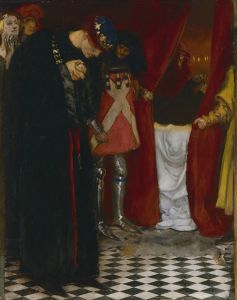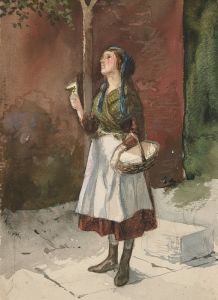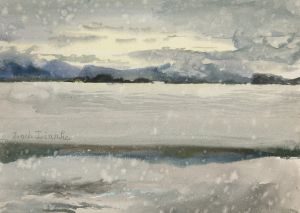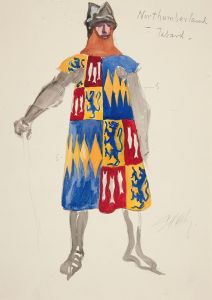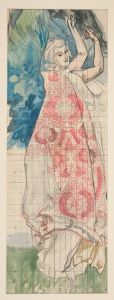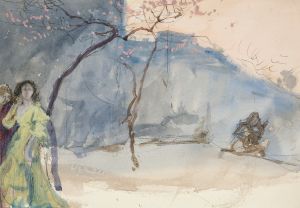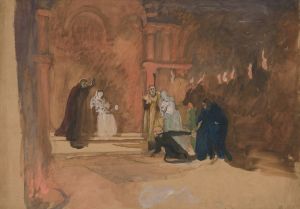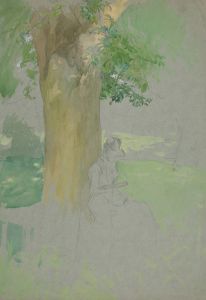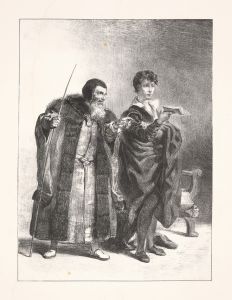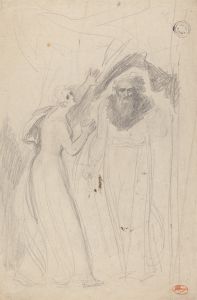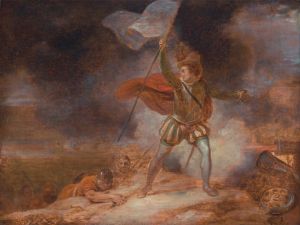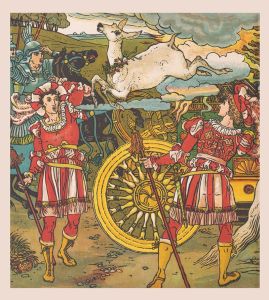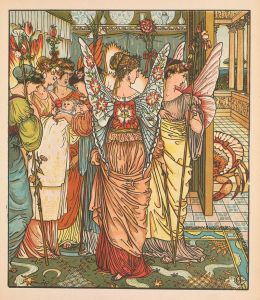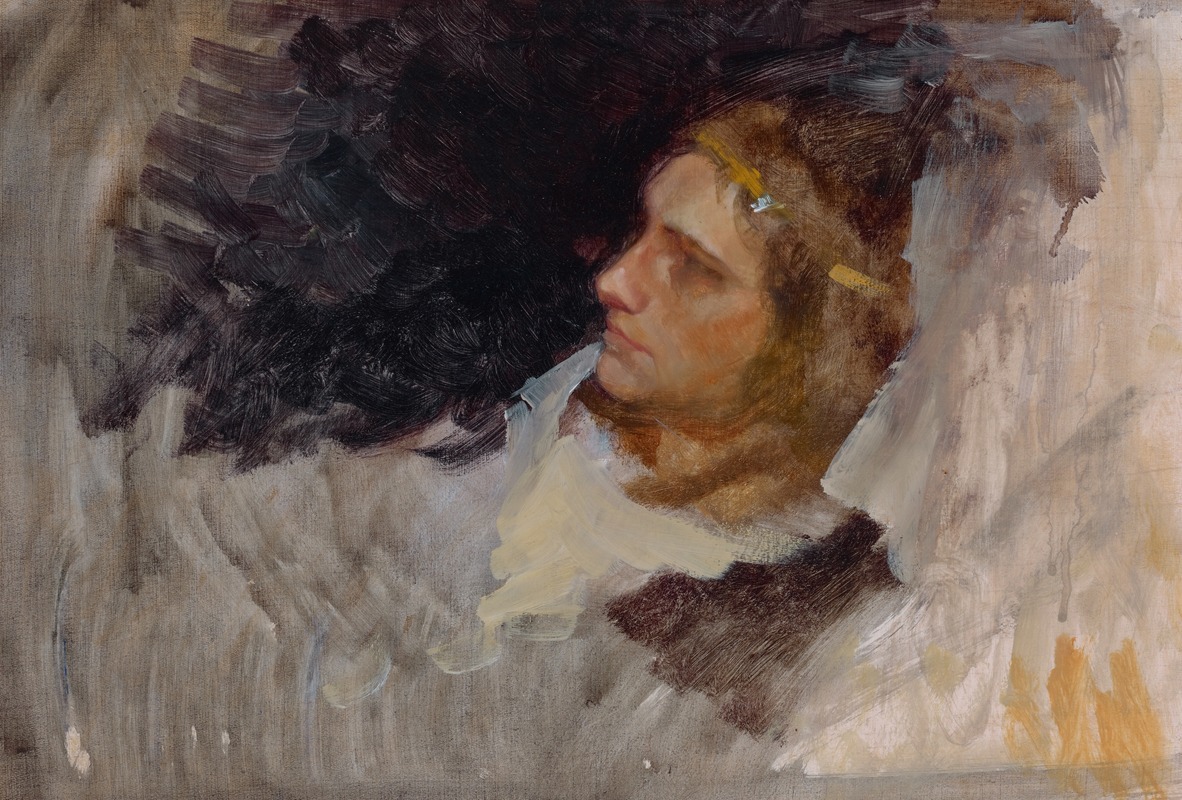
Figure Study of Hamlet, for The Play Scene, Hamlet, Act III, Scene II
A hand-painted replica of Edwin Austin Abbey’s masterpiece Figure Study of Hamlet, for The Play Scene, Hamlet, Act III, Scene II, meticulously crafted by professional artists to capture the true essence of the original. Each piece is created with museum-quality canvas and rare mineral pigments, carefully painted by experienced artists with delicate brushstrokes and rich, layered colors to perfectly recreate the texture of the original artwork. Unlike machine-printed reproductions, this hand-painted version brings the painting to life, infused with the artist’s emotions and skill in every stroke. Whether for personal collection or home decoration, it instantly elevates the artistic atmosphere of any space.
"Figure Study of Hamlet, for The Play Scene, Hamlet, Act III, Scene II" is a notable work by the American artist Edwin Austin Abbey. Abbey, born in 1852, was an illustrator and painter known for his depictions of Shakespearean scenes and historical subjects. His work often reflects a deep engagement with literature and drama, particularly the plays of William Shakespeare.
This specific study by Abbey is part of his broader exploration of Shakespeare's "Hamlet," a play that has captivated audiences and artists alike for centuries. The scene depicted in this study is from Act III, Scene II, commonly referred to as "The Play Scene." In this pivotal moment of the play, Hamlet stages a play within the play, known as "The Mousetrap," to gauge the guilt of his uncle, King Claudius, in the murder of Hamlet's father.
Abbey's study focuses on the character of Hamlet during this scene, capturing the prince's complex emotional state as he observes the reactions of the court, particularly that of Claudius. The artwork is a testament to Abbey's skill in conveying psychological depth and narrative tension through visual art. His attention to detail and ability to capture the essence of Shakespeare's characters are evident in the careful rendering of Hamlet's expression and posture.
Edwin Austin Abbey was part of a generation of artists who were deeply influenced by the Pre-Raphaelite Brotherhood and the Aesthetic Movement. His works often exhibit a meticulous attention to detail and a rich use of color and texture, which are hallmarks of these movements. Abbey's Shakespearean illustrations and paintings were highly regarded in his time, contributing to his reputation as a leading illustrator of literary subjects.
The "Figure Study of Hamlet" is likely one of many preparatory works Abbey created in the process of developing his larger compositions. Artists of Abbey's era often produced numerous sketches and studies to refine their ideas and compositions before executing the final piece. These studies provide valuable insight into the artist's creative process and his approach to interpreting literary texts through visual art.
Abbey's contributions to the art world extend beyond his Shakespearean works. He was a member of the Royal Academy of Arts in London and received numerous commissions for murals and other large-scale projects. His ability to blend narrative and visual elements made him a sought-after artist for both public and private commissions.
In summary, "Figure Study of Hamlet, for The Play Scene, Hamlet, Act III, Scene II" by Edwin Austin Abbey is a significant work that reflects the artist's deep engagement with Shakespearean drama. Through his detailed and expressive portrayal of Hamlet, Abbey captures the psychological complexity and dramatic tension of one of Shakespeare's most famous scenes. His work continues to be appreciated for its artistic merit and its contribution to the visual interpretation of literary classics.





